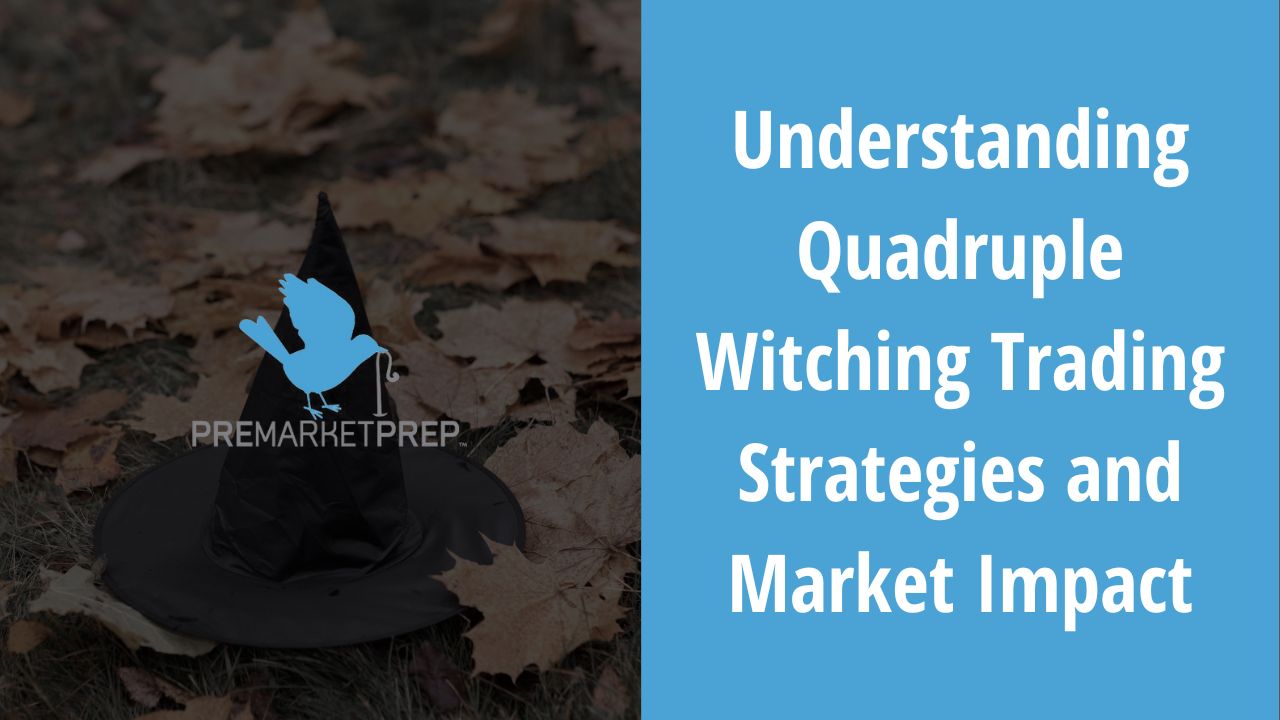What is Quadruple Witching?
Quadruple witching, also known as quad witching, refers to a phenomenon that occurs four times a year, specifically on the third Friday of March, June, September, and December. On these days, four types of financial derivatives expire simultaneously: stock index futures, stock index options, stock options, and single stock futures. This convergence of expirations can lead to increased trading volume and market volatility as investors adjust or exercise their derivative contracts.
The Impact of Opening Imbalances on Quad Witching Days
One of the key effects of quad witching involves large opening imbalances, a phenomenon discussed by Dennis (DDD) Dick and Joel Elconin in this episode of the PreMarket Prep show. An imbalance occurs when the number of buy orders and sell orders for a given stock aren’t equal at market open (or close). For instance, if more investors want to buy a stock than sell it at market open, this creates a buy imbalance. On quad witching days, these imbalances can be especially large, leading to significant price swings.
Trading Strategies for Quad Witching Days
DDD trades quad witching days by taking advantage of these imbalances. If a stock is set to open significantly higher due to a buy imbalance, he might decide to short it, betting that the price will fade. Conversely, if a stock is poised to open significantly lower because of a sell imbalance, he might buy it, predicting that the price will rise. However, he cautions that this strategy can be risky and that it’s important to avoid making trades based on news, which can lead to more sustained price movements.
DDD and Elconin also discuss the importance of the opening and closing prints on quad witching days. The opening print is the price at which a stock first trades when the market opens, while the closing print is the price at which it last trades before the market closes. Both prints are particularly significant on quad witching days due to the large number of expiring derivative contracts. Institutional investors often place large orders at the open and close of the market to manage their derivative positions, creating significant price swings.
In addition to quad witching, DDD and Elconin touch upon the topic of index rebalancing, which also contributes to market volatility. Index rebalancing is the process by which the components of a stock market index are adjusted or updated. This can involve adding or removing stocks from the index or changing the weightings of existing components. For instance, on the day of the S&P 500 and Russell index rebalances, many stocks are added or removed from these indices, leading to large buy and sell orders as index funds adjust their portfolios to match the new index composition. The S&P 500 index was set to rebalance on the third Friday of June, while the Russell reconstitution is set for the fourth Friday of June.
DDD notes that trading strategies around index rebalancing have evolved over time. In the past, traders often bought stocks that were set to be added to an index and sold those that were to be removed, expecting the former to rise and the latter to fall. However, as this strategy became more widely known and used, it has become less predictable and effective. Nowadays, DDD prefers to use a strategy of providing liquidity, placing orders to buy stocks that gap down and sell stocks that gap up, rather than trying to predict which stocks will rise or fall due to rebalancing.
The Significance of Quad Witching in Financial Markets
In conclusion, quad witching is a unique event in the financial calendar that can create market volatility and trading opportunities. However, it also requires careful strategy and risk management, as the increased trading volume and price swings can make the markets more unpredictable.






